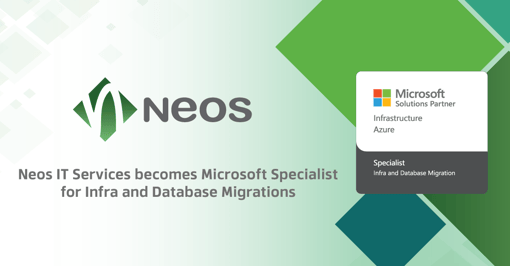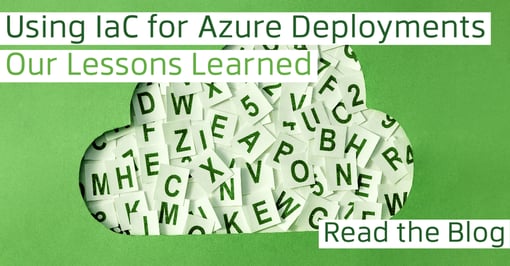
Why do businesses move to the cloud?
Most companies already have extensive experience with cloud technologies, be it a single application or a significant part of their IT infrastructure. However, whether the cloud is already in use or not, a review of the whole strategy may be beneficial from an efficiency and/or cost perspective.
There may be different reasons for this decision, including:
- IT consolidation, expansion, merges, or acquisitions - new geographical areas need to be integrated or unified
- Policy requirements/compliance - the current IT environment needs revising and/or updating
- The current IT service contracts are going to expire or need to be reviewed
- The licensing of deployed solutions has changed
- Need for cost optimisation
- Concern regarding the cloud capabilities of the current IT Service Provider
What are the potential benefits of moving to the cloud?
Whether the customer moves its whole IT infrastructure to the cloud or only a part of it (hybrid model), they will definitely see the benefits if implemented correctly. The most important of these are:
- More focus on the core business by reducing the amount of physical infrastructure to be maintained in the case of an on-prem data center
- Increased productivity of the IT team due to the reduced amount of administrative tasks
- Cloud environment flexibility – specific resources can be added or excluded as required
- Optimization and modernization using current cloud-native services
- Increased security and compliance using ready-made guidelines and standardised roles at potentially lower cost in comparison to on-premises solutions
- High availability and redundancy of the cloud infrastructure
- Sustainability (ESG) - cloud providers promote the CO2 neutrality of their infrastructure
Which cloud model to choose?
Public cloud (including Hyperscaler)
This type of cloud environment is one of the most frequently used. As in any other cloud environment, the provider makes the IT infrastructure available to its customers securely via the Internet so that companies do not have to purchase any hardware or software.
Free access distinguishes public clouds from other models. In such a cloud, several companies share the same environment. This offers several advantages—public clouds are remarkably cost-effective and scalable.
Private cloud
This is a cloud computing environment that belongs to a single user. It combines the advantages of cloud computing (elasticity, scalability, and simple service provision) with the safety and control of an on-premises IT infrastructure. All hardware and software resources are reserved exclusively for a single user and are only accessible to them.
Hybrid cloud
As one can understand from the name, a hybrid cloud combines public cloud, private cloud, and possibly local infrastructure. Companies host part of their IT infrastructure in a public and private cloud environment and yet can continue to use part of it on-premises. Mixing different models allows a business to gain the technical advantages of each, but is unlikely to do so at optimal cost. The hybrid cloud combines the public cloud’s flexibility and the private cloud’s perceived higher level of security. This generates increased comfort for certain companies. For example, a database can be hosted in a private network while the applications accessing it are running in a public cloud. The advantage is that the data can be held in a secure environment closely managed by the customer while the application performance retains its scalability.
Multi-Cloud
Multi-cloud is a cloud computing strategy where several public cloud services from different providers and software as a service (SaaS) are used simultaneously. The idea behind it is to improve performance, security, scalability, and cost requirements by combining different cloud offerings. In other words, instead of being limited to a single cloud platform, companies can use a multi-cloud strategy to select the best services for different tasks and minimise risks simultaneously. However, the services must be coordinated in a comprehensive multi-cloud management system to ensure the smooth exchange of information and data security.
The NEOS path to the cloud
The Cloud Adoption Journey
The journey of applications to the cloud consists of clearly defined project phases before they go live. The various steps can be illustrated as follows:
 Pic. 1 - NEOS Cloud Adoption Journey
Pic. 1 - NEOS Cloud Adoption Journey
The journey to the cloud begins with the Strategy workshop, where the business aspirations, needs, and outcomes will be considered in designing the cloud environment.
This is followed by the Discovery & Assessment phase, which involves documenting the current state of the IT environment and analysing the findings. These findings will then be taken into account when developing the cloud IT strategy. Another important step in this phase is to estimate and optimise the costs of operating the environment in the cloud. The cloud strategy will be validated or adjusted according to the results and the alignment with the business strategy.
Next up is the Migration Planning phase.
At this step, after a series of workshops, important decisions will have to be made about the cloud and the implementation strategy. Here are some of the resolutions that may need to be reached:
- The Landing Zone structure (the environments where individual applications or their groups are operating)
- The decision to use Infrastructure as Code (IaC) to automate the deployment of operational environments. This is particularly important if multiple operational environments are required, or development environments are initiated and then need to be removed.
- The way applications or workloads will be migrated
- there are six possible approaches or the 6R's of cloud migration:

- Proof of concept (PoC): If it is unclear how and whether an application or workload should be migrated, a PoC is an excellent way to test the options and validate the final solution. For that purpose, an organisation may want to create a test environment, migrate the application there, and see if it runs smoothly. This prevents the application from possible failures during its operation in the cloud.
- there are six possible approaches or the 6R's of cloud migration:
- As the last step comes the Migration Execution to the cloud in the predefined milestones (e.g., groups based on the migration type or depending on which landing zone they are migrated to), the testing of the applications, and the transition to productive operation.
Once the environment runs in the cloud, the phase of continuous monitoring and operation of the environment begins.
The NEOS approach offers various task-resolving scenarios, whether the customer lacks the resources to handle them on their own right away, wishes to take them on later, or even takes them as part of a tailored NEOS-managed service. This includes 24/7 support and maintenance, security and compliance, and ongoing optimisation services.
The flexible “role-based” model
NEOS provides a flexible, role-based team that accompanies the project from design to deployment and subsequent operation. Our engineers adopt the relevant roles required to implement and run the environment(s) with the roles and the workload tailored to the specific project requirements.

Pic. 2 - Azure roles - analogy to the real world
The roles being distributed and tested in the real-life virtual hierarchy of responsibilities, which enables a successful joint operation of the cloud environment – cooperation at its best:

Pic. 3 - Shared responsibilities
The cloud governance model
The NEOS approach to governance is about enablement, not policing. Cloud governance provides regulations for the traceable and secure use of data and applications. It is about ensuring continuous control over applications and data, whilst providing a framework within which engineers and developers can operate without breaching the ‘rules’. This includes legal, technical, organizational, operational, and security related guidelines.
Applying cloud governance concepts can adapt existing IT processes to the specific cloud environment, as most companies already work with an existing IT governance concept. However, this has often been set up for on-premises operations and cannot be used 1:1 for the cloud environment. The concept may need to be adjusted and refined to suit a cloud accessible from the Internet.
Rules, guidelines, and standards are defined for all cloud services the company uses. In such a way, we ensure that cloud infrastructure is unified. The aim is to maintain full control over all cloud services currently in use and introduced in the future.

Pic. 4 - What does cloud governance analysis involve?
The main task of cloud governance is to ensure data security and compliance with rules, regulations and laws through appropriate use of frameworks and guidelines. In the modern environment, ensuring that all cloud solutions comply with legal requirements is extremely important. All data must be stored in the cloud in accordance with the principles of the European General Data Protection Regulation (GDPR). The responsibility for this lies with the company using the cloud. Although public cloud providers advertise compliance with their cloud infrastructure with the GDPR, this does not apply to the data that the customers themselves store within it.
Cloud governance also contributes to IT security. Rules and guidelines ensure security standards for data use in the cloud, which, in combination with the right cloud security tools, results in efficient protection against cybercrime.
Cloud governance vs. cloud management
Cloud management refers to the active management of the cloud environment using tools. In the Microsoft Azure Cloud, these include Azure Monitor, Network Watcher, Azure Advisor, Azure Resource Manager, Azure Portal, Azure Policy, and Microsoft Cost Management.
Cloud governance, on the other hand, allows for the use of integrated and user-defined policies to set guardrails throughout the environment.
At its core, there are five disciplines that make cloud governance, and these are defined in the Cloud Adoption Framework model:
- Security policies
- Cost management
- Consistency of services
- Identity management
- Compliance guidelines
The policies created as part of a cloud governance concept will ultimately define how the cloud environment is managed.
So, the following problems can be prevented when aligning with a concept for cloud governance:
- Incompatibilities between individual cloud services
- Shadow IT in the cloud
- Security gaps
- Loss of control over data
- Violations of laws/guidelines such as the GDPR
- Dependence on a specific system or cloud service provider
In conclusion
NEOS accompanies its customers by carefully understanding its strategic objectives and reasons for moving to the cloud, then analysing the current situation, designing the target architecture and the associated governance model, testing cloud scenarios for problematic applications, setting up the cloud environments, and finally, migration. NEOS work, however, continues beyond that, supporting the customer in all future cloud-related activities. This can be performed by an individually assembled team of experts, aka “Team as a Service”, individual cloud IT experts, or a complete end-to-end managed service for the IT infrastructure operation.



